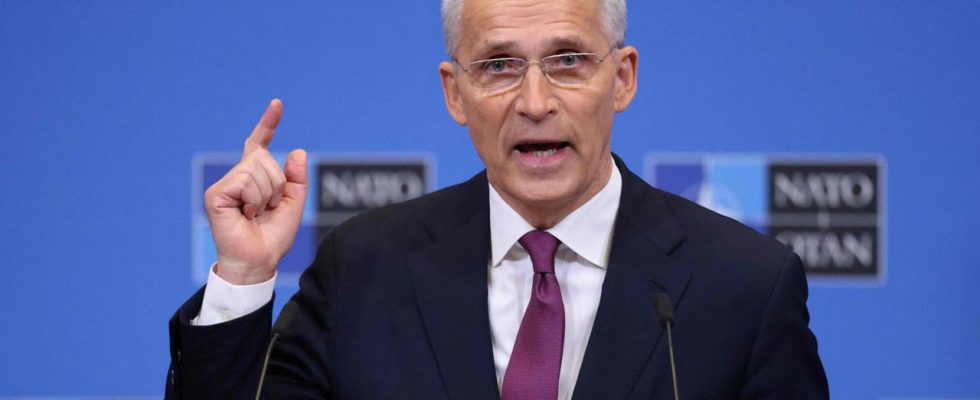analysis
The situation is bleak: winter has set in, the Ukrainian offensive is faltering, and resources are becoming scarce. NATO Secretary General Stoltenberg reiterates his support for Ukraine – but what should happen next?
The initial situation could hardly be bleaker: onset of winter – ice and snowstorms in some parts of Ukraine. And the capital, Kiev, has just experienced the worst drone attacks since Russia began its incursion more than 650 days ago.
Rarely have so many disillusionments been expressed in the words of many European politicians. This was also the case with Defense Minister Boris Pistorius at the recent meeting of EU defense ministers: “I believe that we are now seeing a situation that, on the one hand, has many components of hybrid and digital warfare.” On the other hand, it is also very reminiscent of trench warfare from the last century. “A war of attrition is taking place. The mutual gains in terrain are extremely marginal. That means: It gets stuck.”
Major offensive without resounding Success
The Ukrainian major offensive was without resounding success. In many places, the Ukrainians are defending their positions against Russian superiority with tons of material and at the cost of many lives.
Overall, an impression of “nothing new on the battlefield” emerges. That can be misleading, says NATO Secretary General Jens Stoltenberg: “We are seeing the most intense fighting in months. And yes, the front line has barely moved.” But the Ukrainians managed to inflict heavy losses on the Russian invaders – measured in people and casualties, but also in the destruction of combat capabilities. “And these are significant military gains, even without significant territorial gains,” said Stoltenberg.
Resources are becoming scarcer
But resources are also becoming scarcer: The EU promised a million rounds of ammunition in the spring – but so far only about a third has been delivered. Ukraine now urgently needs more air defense systems, says President Volodymyr Zelensky. Beyond the additional “Iris-T” anti-aircraft missile systems that Pistorius promised in Kiev last week.
Germany stands by all commitments – even despite the new budget hole of at least 60 billion euros, Federal Foreign Minister Annalena Baerbock affirmed before her NATO visit to Brussels: “It is in our own, in our geopolitical interest, that Ukraine joins the European Union. That’s why we will not only continue our support for Ukraine, but also increase it. In the EU, but also in NATO.”
The big questions remain
The approximately eight billion euros extra from Germany, plus two billion from the Netherlands, are a new, strong signal of support from NATO partners, explains Secretary General Stoltenberg. Just like the training center in Romania, where Ukrainians have been trained on F16 fighter jets for two weeks.
But the big questions continue to hang over NATO headquarters: Is this enough – and for what? Does the West need a new strategy? Also in view of the danger that the largest supporter, the United States, could withdraw?
The commander-in-chief of the Ukrainian army, Valeriy Zalushnyj, is warning of a “grueling trench war that could drag on for years” if Ukraine does not get completely new types of weapons. Also a reference to the German cruise missile “Taurus”, which Chancellor Scholz refuses to supply.
Original Security interest
The top NATO official says diplomatically: “We are providing Ukraine with increasingly advanced systems. And it’s not about a specific item or a specific weapon. The question is: How do they all work together? How do we use drones, how do we use them? “We cyber attacks? How do we connect certain weapons systems to create new capabilities for Ukraine?”
Because nothing has changed at all. According to Stoltenberg, the NATO partners are firmly on Ukraine’s side – if only in their own security interests.
Kathrin Schmid, ARD Brussels, tagesschau, November 27th, 2023 6:01 p.m

